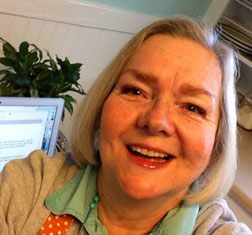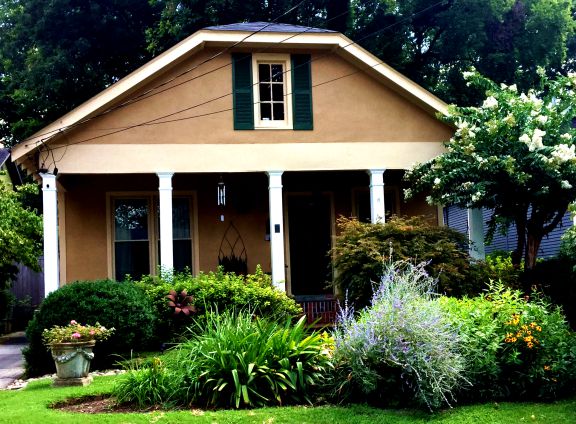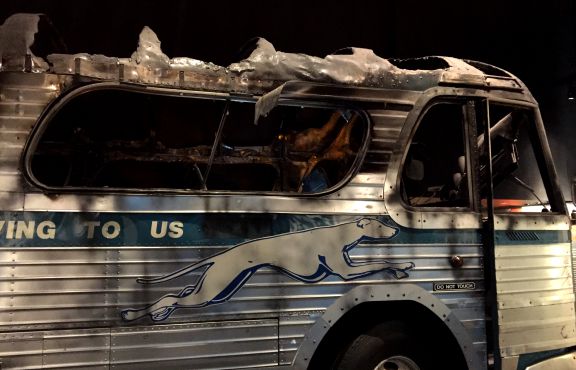We haven’t heard from her recently.
WELCOME BACK, SOUTHFACIN’ COOK, PATSY R. BRUMFIELD!

EGGPLANT BREAD PUDDING
By Patsy R. Brumfield
The Southfacin’ Cook

So, I consider myself a bit of an expert on how to make bread pudding – you know, French bread, cream, brown sugar, raisins, cinnamon, whiskey sauce etc. I like to show off how good mine is.
In my Pandemic confinement, I recently caught a Greek-theme cooking show with a recipe for a savory bread pudding with artichokes. That sounded pretty interesting, but I’d just received up my weekly local farm-box with extra eggplants. Why not?!
It’s my first time to make this, so I’m winging it a bit. But this casserole concept has a lot of potential. I’m going to share it with my son’s family tonight. It turned out to be delicious!

How to make it:
EQUIPMENT – medium dutch oven or large saucepan, large skillet, 2 large mixing bowls, large baking sheet, microplane grater, (for cheese) box grater or food processor on shred cycle, measuring tools, whisk, wooden spoon, chopping board, chef’s knife, 9×13 baking dish or handy throw-away aluminum pan, aluminum foil

INGREDIENTS
2 medium size eggplants (enough to make 6 cups of 1-inchish cubes)
3 Tablespoons butter
¼ cup extra-virgin olive oil (Greek, if you can find it)
Salt for dutch oven or large saucepan water
2 large red onions, finely chopped
3 garlic cloves, minced
3-4 rounds of pita bread (torn into 1-2 inch pieces and lightly toasted under broiler until crisp, not burned)
1 teaspoon freshly grated nutmeg
1 Tablespoon chopped fresh thyme
Grated zest of 1 lemon
1 ½ cups heavy cream
1 cup milk
3 large eggs
Salt and pepper (I used about 1 Tablespoon salt)
1 ½ cups grated Gruyere cheese
¼ cup grated mozzarella cheese
Ground cinnamon
Olive-oil cooking spray for baking dish

Let’s do it …
Peel eggplants. Cut flesh into cubes of 1-1 1/2 inches. Bring dutch oven or large sauce pan of salted water to a rolling boil. Add eggplant cubes about 1/3 at a time to blanch about 3-4 minutes. Move to large bowl to cool.

In heavy skillet, heat butter and olive oil over medium heat. Add chopped onions and cook until wilted and lightly colored, about 12 minutes. Stir in garlic and cook together, stirring about 1 minute.

Prepare 9×13 casserole baking dish: Use butter or cooking -spray (I like the olive oil kind for this recipe)

In a large mixing bowl, toss together toasted bread pieces, eggplant, onions/garlic, herbs, salt, pepper, nutmeg, 2/3 Gruyere cheese. Whisk eggs with milk and cream, lemon zest and thyme, pour over the mixture and toss to dampen it all. Combine rest of Gruyere and mozzarella, and sprinkle across top of casserole. Lightly sprinkle cinnamon on top of cheese. Place casserole in refrigerator at least 1 hour. Overnight is OK.

Preheat oven to 400 degrees about 15 minutes before you’re ready to bake. The TV lady’s recipe didn’t call for covering the casserole with foil to bake it, but I’m going to do that for the first 30 minutes (which is what I do with traditional bread pudding), then remove the foil so the top can brown. (If casserole has been in the fridge overnight, take it out about 30 minutes before baking.)
Bake until set and golden, about 30 minutes covered, then uncovered for another 15 minutes. Remove from oven and let cool slightly (10-15 minutes), then serve.
SERVES 6

All Images from Patsy R. Brumfield
Like this:
Like Loading...























